Rahel Jaskow’s photo essay on equality at the kotel, Separate and Unequal at the Western Wall, prompted much commentary. She decided to return with her camera over the Passover holiday to document any differences. Here is her report.
Return to the Western Wall: Passover 2013 by Rahel Jaskow
Every time I visit the Western Wall, the first thing I notice are the changes. Between the excavations, the construction and Jewish Agency Chairman Natan Sharansky’s new proposed plan to expand the Western Wall area to include egalitarian prayer (if the plan should actually be carried out), the area is in flux, a work in progress.
Over the past few years, I’d noticed that the Western Wall and the surrounding areas had become more segregated – or, at least, that there were stricter rules in place. This past Passover, the rules appeared to be somewhat less strictly enforced. There were fewer barriers outside the prayer area and no signs mandating gender segregation throughout the entire plaza, as there had been during festival times in the recent past. There are also new permanent restrooms instead of the temporary ones that had been installed during festivals in recent years. I don’t know what other changes are planned, but I hope to document them as I find them.
Before starting my walk through the plaza, I paused on an outdoor balcony in the Jewish Quarter overlooking the Western Wall Plaza and photographed the area from above. As has been done in previous years, the divider between the men’s and women’s sections was moved slightly to the left, giving the women a bit more room in the outdoor section. (Click on the photo to see a version with notes showing where the divider in the prayer area was on Passover in relation to where it is during most of the year.)
There are quite a few signs on the way into the plaza instructing visitors to dress modestly out of respect to the holy place they are about to enter:
I think that the part about causing “harm to this holy place or to the feelings of the worshippers” would probably be better translated as follows: “… so as to show respect to this holy place and to the feelings of the other worshippers.” I think such a translation, which emphasized the positive (showing respect) over the negative (avoiding hurting worshippers’ feelings and insulting a holy site) would sound better, and less like a veiled threat. Harming a holy place and worshippers’ feelings at the same time sounds like a pretty scary thing to do.
If the guards at the entrance feel that a woman visitor is not sufficiently covered, the women stationed here (and at similar tables at the other entrances, plus a table at the back of the plaza) will give her a scarf to use while she is in the Western Wall plaza. (The tables were not staffed because it was late on Friday afternoon.)
Here, at an adjacent entrance, is more helpful information to visitors who may feel they need to cover up:
Please return the scarves on the way out:
I approached from the northern side this time, and the security personnel waved me through without making me go through any inspection at all. (I guess I didn’t look threatening – I wasn’t carrying a tallit.)
The indoor women’s section
This particular women’s section is not too well known. Its entrance is located fairly deep inside the outdoor men’s section, and unlike in past years, it is now clearly marked.
How to get there? Go into the men’s section (yes, you read that right – it is the only way to get there), all the way to the left until you can’t go any farther (you’ll hit a wall if you try). Now turn right, stay close to the wall along the left side, and walk downward toward the Western Wall. You will pass some bookshelves cut into the wall and what looks like a small room with high bookshelves and a few chairs. Continue downward, sticking close to the wall on the left, and you’ll come to this doorway:
You know the expression “etched in stone”? Well, this certainly is. I did a double-take when I first saw it – but yes, it actually says “Women’s section” in Hebrew and in English.
A closer look at the sign:
I went inside. It was certainly different from what I remembered from years past – I think that the last time I was here was around 2005. It’s been renovated quite a bit since then.
The books on the shelves are copies of The Kotel Siddur, a prayer book with the Friday night service that is rented out (payment in advance) to groups who come to the Western Wall. I didn’t get a chance to look inside the books, but from what I saw on the Western Wall Heritage Foundation’s website, the prayer books are intended for people who are coming to the Western Wall for the first time and are not familiar with Jewish prayers or traditions.
Once I was in the corridor, I heard a man’s voice behind me. “Geveret, geveret,” he called. (“Geveret” is Hebrew for “ma’am.”) “You’re not supposed to be in here.”
I turned in surprise and found myself facing one of the ushers, a young man who began pushing one of the wheeled bookshelves that contained The Kotel Siddur to its destination, wherever it was.
“The sign over the entrance says that this is the women’s section,” I told him. “It’s written right there.”
At the same time, a male worshipper exited through the corridor, passing the usher and me. He looked at me in surprise. “Geveret, you’re not supposed to be here,” he said. “The women’s section is on the other side of the mehitza [divider between the men’s and women’s outdoor sections of the Western Wall].”
“This is a women’s section,” I told him. “It’s written above the door just outside.”
“Where?” the man asked, honestly confused.
“Walk out of the corridor,” I told him. “As soon as you’re outside, turn around and look up, just above the entrance. It’s written right there, above the door.” He left, presumably to check out the truth of what I’d said.
The usher was still looking at me. “You’re not supposed to be here yet,” he said. “This area doesn’t become a women’s section for another hour or so.”
Now it was my turn to be confused. “But it says right above the door, in stone, that this is the women’s section,” I told him. “Where is there any mention of specific times? Can you show me, please?”
“No,” he said, “but everybody knows that. I’m asking you to leave, and you’re supposed to obey the ushers here. Come back in an hour.”
At that very moment, an elderly lady entered the corridor, walking with the aid of a walker. The usher fell silent as she passed him, made the sharp right turn at the end of the hallway and proceeded toward the area just before the doorway leading to the Western Wall, where women customarily pray. We followed quietly, at a distance.
Here is the lady inside the women’s section. Her walker is clearly visible. The stone wall just beyond the doorway is the Western Wall. The women’s section is actually the corridor that leads to the doorway, which runs perpendicular to the Wall. In the past, a door hung with a ragged-looking curtain separated the entrance from the corridor, and women crowded at the door to listen to the services on the other side and murmur the proper responses at the proper times.
Another woman came and joined the first. The usher asked them to wait while he closed the large, heavy wooden door that led to the men’s section, which is right up against the large indoor section of the Western Wall. As the women stepped aside, the usher moved in front of them to close the door.
The door fully open…
…closing…
… and shut.
I realized this was what the usher had meant when he said that the area wasn’t a women’s section yet: apparently, when the door was open, allowing an unobstructed view (and access) to the men’s section, the area could not be considered a proper women’s section. The door, so it seemed, had to be closed before the area was considered proper for women to pray in.
The two women moved two plastic chairs into place. At first, they sat down one behind the other. The woman nearest the door pulled back the curtain a bit to peer at the Western Wall through the latticework.
The woman seated behind her moved up for a closer view.
Here’s a closeup of the latticework they were peering through:
They continued to look at the Western Wall as best they could through the latticework, holding the curtain aside:
Once they had looked as much as they wished, they slowly let the curtain drop back into place…
… and began to pray.
I noticed that a man’s shirt had been flung over the top of the curtain. To whom did it belong? Did the ushers know it was there? I didn’t ask.
It was time to go. One more photo of the entrance as I left:
The stone proclaiming the area a women’s section, not mentioning any particular times of day or other conditions, was still there.
The outdoor men’s section
I started making my way out of the men’s section back to the plaza. Here are some photos of the left side of the men’s section. Some lovely wooden bookshelves with beautiful carvings:
At the far end is a rack where printed sheets of writings on religious topics are kept for worshippers.
Just past the rack is a small room with bookshelves and chairs. It looks like a quiet, relatively secluded place where a person can engage in solitary prayer or study, away from the noise and the crowds. (I’d enjoy having a space like this available to women at the Western Wall.)
The Western Wall plaza
The area at the far end of the plaza, where the restrooms used to be, is now a construction site.
Here are the additional dividers that have been put up behind the prayer area during festival weeks in recent years. A few things are different, though: the signs mandating complete gender segregation in the Western Wall plaza are nowhere to be seen. There are also fewer dividers than in the past.
In the women’s section, which has been temporarily expanded, looking toward one of the many arks that hold any one of the hundred Torah scrolls on the men’s side:
Looking toward the Kotel between the permanent and the temporary dividers:
Looking through the openings in the permanent divider at the temporary one:
Remember the carved bookshelves on the far end of the men’s side, and small room for people who wanted to pray or study in a quieter, more secluded place? Readers may want to scroll up to take another look at that photo and contrast it with this:
This is what the far side of the women’s section looks like. It’s never been nearly as nice as the far side of the men’s section, even before the archaeological digs beneath the Mugrabi Gate began.
More changes: the walkway at the back of the plaza, which was formerly marked as being for men only, did not have the “men only” signs when I was there during Passover. Instead, it had signs directing people to the new permanent restrooms behind the women’s section.
The walkway leading to the security inspection checkpoint had no signs directing men and women to walk on different sides or police dividers to enforce segregation, as in previous years. It was completely clear.
A permanent building for restrooms has been constructed just behind the women’s section. Right now, the new restrooms are for both men and women, with separate entrances. I’ve been told that once construction on the men’s side is completed, the restrooms behind the women’s section will be for women only, but that remains to be seen.
It seems there are more changes ahead for the Western Wall plaza. Recently, Jewish Agency Chairman Natan Sharansky drafted a plan to include a space for egalitarian prayer at the Western Wall in the area known as Robinson’s Arch. As far as I know, his plan makes no mention of women’s tefilla [prayer] groups, which are made up of Orthodox women who pray separately from men. He also hasn’t said what will be done to preserve the archaeological character of Robinson’s Arch. We can only wait and see.
About the author: Rahel Jaskow, a singer, translator and amateur photographer, lives in Jerusalem and blogs at Elms in the Yard. Her award-winning CD of Shabbat songs, Day of Rest, is available at CD Baby.
You may also enjoy:
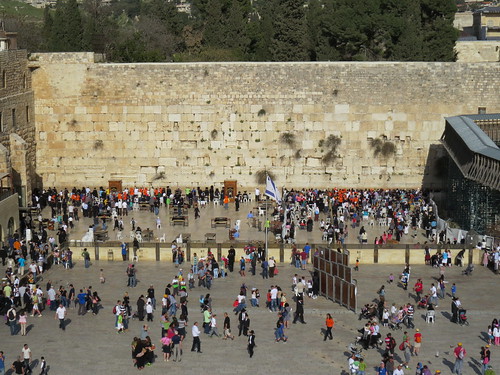

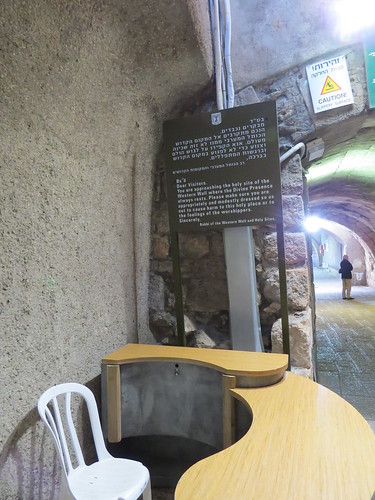
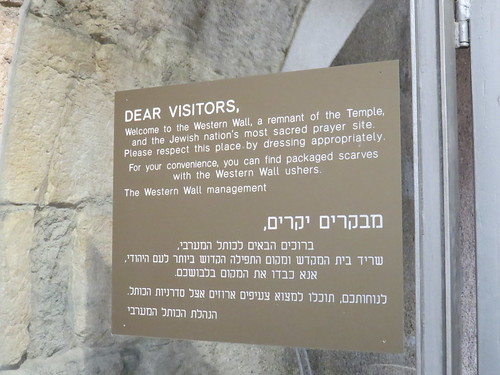



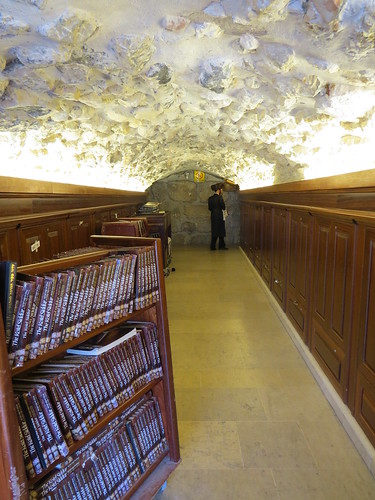
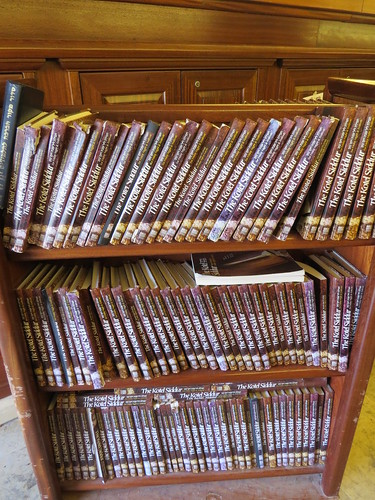
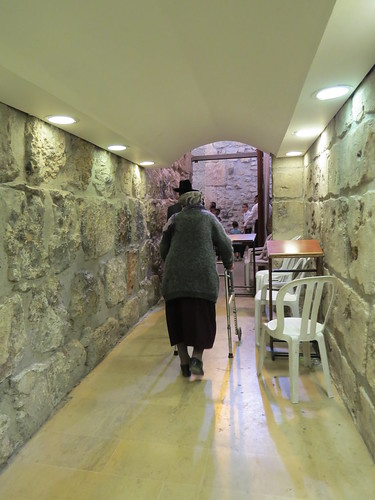
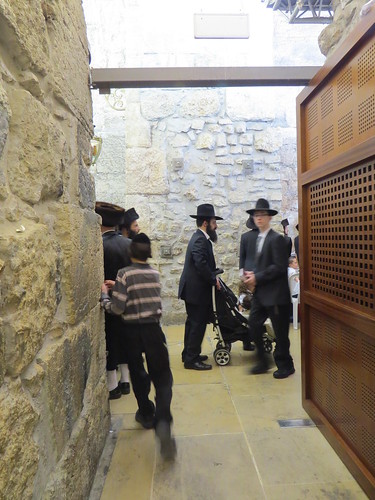
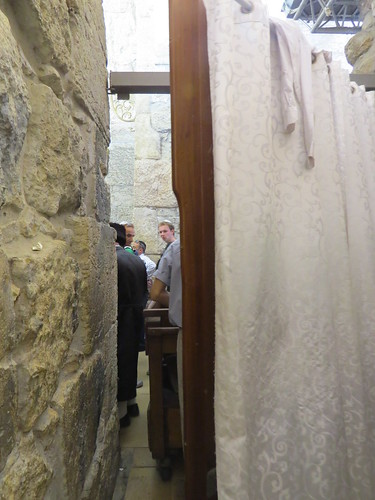
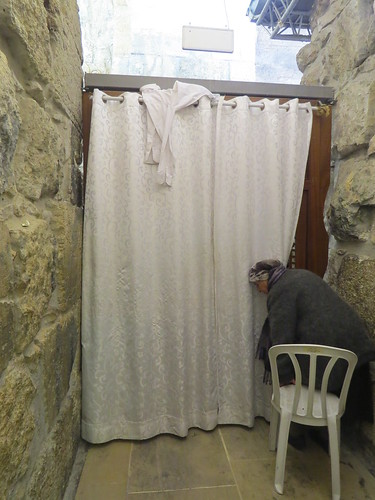
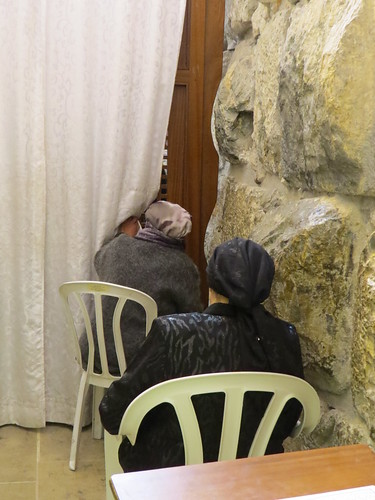

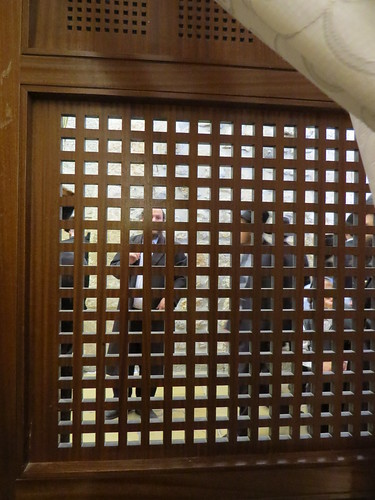
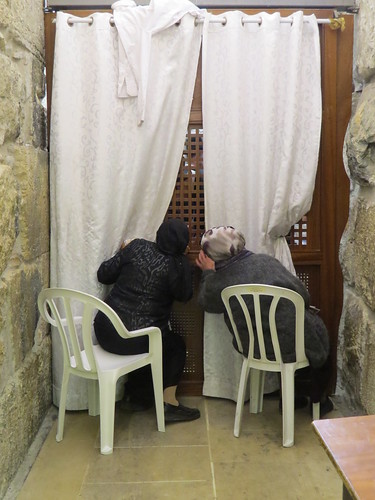
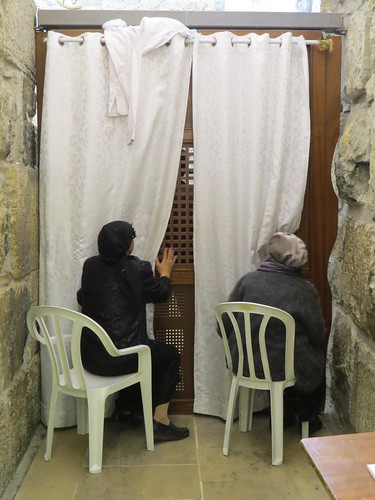
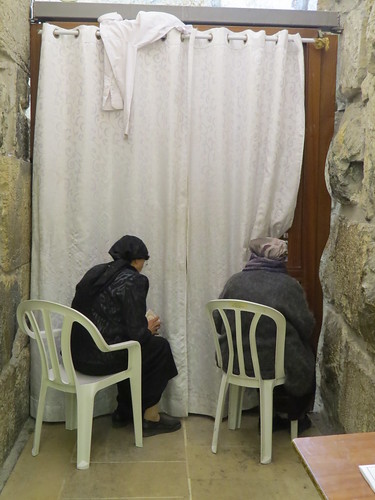
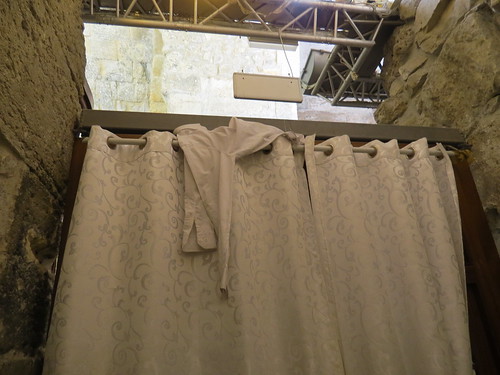

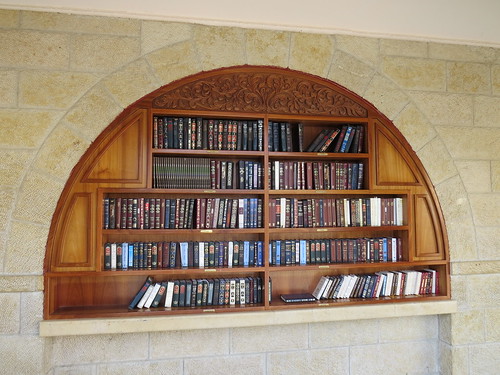
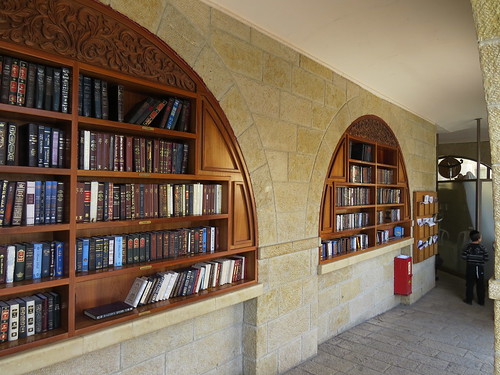


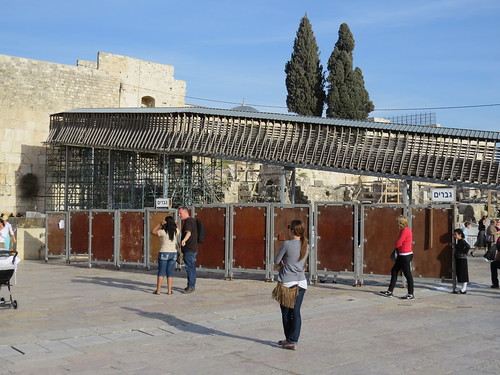
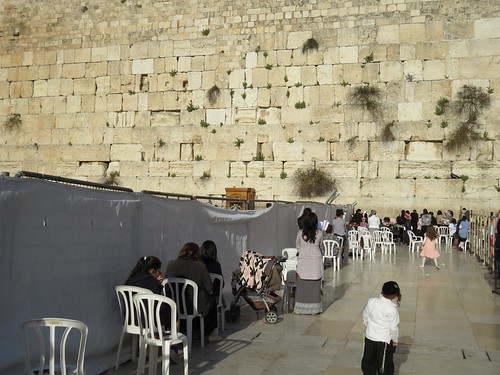
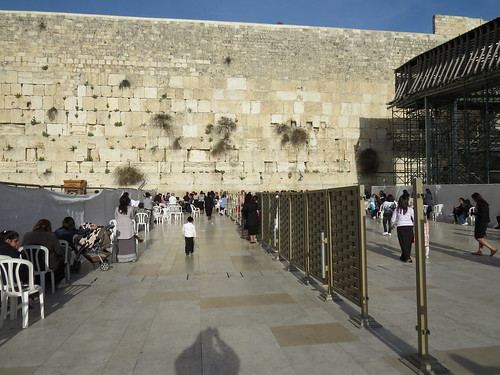

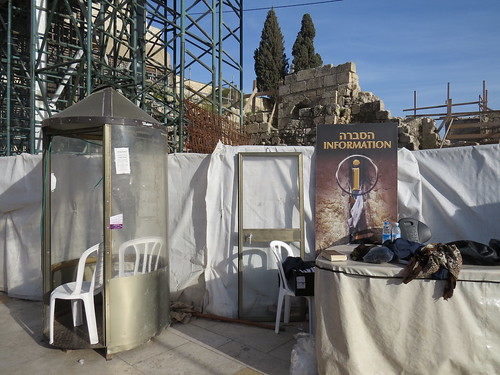
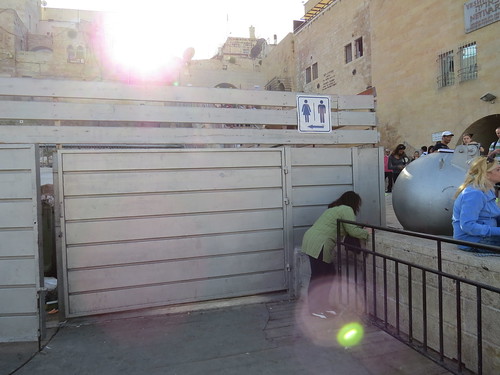

Because of a technical glitch, comments either were not allowed or required registration. Apologies to readers, and especially to Rahel. Feel free to comment below.
I’ve lived here for 7 years and refuse to visit the wall. It seems like idol worship that a person of herod’s character build something that we consider holy. The way people are squabbling over it is unholy–It’s a piece of rocks. The religious right are obsessive-compulsive fools sho have begun to believe all this nonsense. We worship G-d by respecting others, treating others well, paying out taxes, participating in the welfare of our country and being kind to our fellow person.
There is something to what you say, Barbara. I wouldn’t dismiss the concept of holiness of place so readily, but you do point out the pitfalls well.